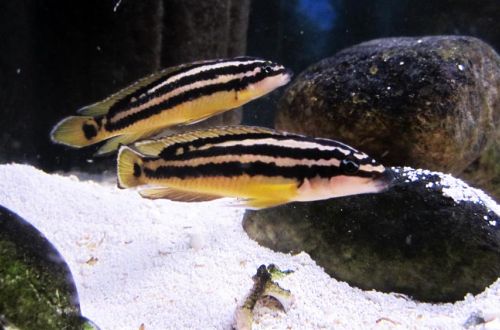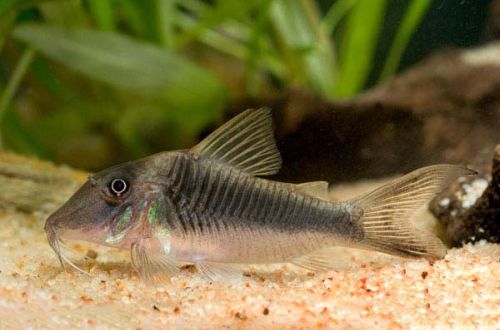
Nannetiops single striped
Nannathiops unistripe, scientific name Nannaethiops unitaeniatus, belongs to the family Distichodontidae. Rare guests in an amateur aquarium, although they have all the prerequisites to become popular aquarium fish – they have an original color, a peaceful disposition, and are relatively easy to keep if they are taught to dry food.

Contents
Habitat
It comes from the river systems of the Congo and Niger from the territory of the modern states of Cameroon, Nigeria, Gabon, the Republic of the Congo and the Democratic Republic of the Congo. It lives everywhere in numerous streams and rivers, floodplain lakes, ponds.
Brief information:
- The volume of the aquarium – from 55 liters.
- Temperature – 22-26°C
- Value pH — 6.5–7.5
- Water hardness – soft (5-12 dGH)
- Substrate type – any
- Lighting – subdued / moderate
- Brackish water – no
- Water Movement – Low/Moderate
- The size of the fish is up to 6.5 cm.
- Diet – predominantly protein foods
- Temperament – peaceful, timid
- Keeping in a flock of at least 8-10 individuals
Description
The coloration is bluish, in the body pattern there are two horizontal lines of yellow and dark blue. There is a dark spot at the base of the tail. Females reach a length of up to 6.5 cm, males only 4.5, and during the spawning period, the color becomes reddish.
Food
The main diet consists of small crustaceans, insect larvae and other zooplankton, as well as algae. If Nannetiops was not accustomed to dry food before selling, then these will have to be dealt with by you.
Maintenance and care, arrangement of aquariums
A small school of fish will require a tank of at least 55 liters, preferably not high (height less than width) to simulate shallow water conditions. The design uses a sandy or gravel substrate with several large smooth stones, various shelters in the form of snags and decorative objects (wrecks, castles, etc.), dense thickets of plants, including floating ones. The lighting is subdued, respectively, you should select plants from among the shade-loving ones. These include Anubias, Java fern and Java moss, Cryptocrine and others.
Water conditions are characterized by predominantly neutral pH values with low carbonate hardness. Maintenance consists in regular cleaning of the soil from waste (uneaten food residues, excrement, etc.) and weekly water changes (15–20% of the volume) with fresh water.
Behavior and Compatibility
A shy, timid species that, in case of possible danger, hides in a shelter. Keeping exclusively in a group of at least 8-10 individuals. Compatible with smaller and peaceful fish. Avoid introducing active species, even if they are half the size of Nannetiops unistripe.
Breeding / breeding
The appearance of fry in the general aquarium is quite rare, but if the proper conditions are provided, the chances will increase many times over. It is desirable to spawn directly in a separate tank in order to protect the offspring not only from other fish, but also from their own parents. The spawning aquarium has a size of about 20 liters. The substrate is of key importance, the bottom is covered with a thick layer of small-leaved low plants or mosses, or covered with a fine mesh, through which the eggs can freely pass. Lighting is subdued, equipment includes a heater and a simple airlift filter.
The impetus for the beginning of the mating season is a gradual change in water conditions: pH parameters are set at 6.0–6.5, dGH no more than 5. The diet should consist mainly of live food. When the males turn red and the females are filled with caviar, they are transplanted into a separate tank.
Spawning does not occur immediately, the fish will take some time to get used to. The process can take several days or even a week. The end of spawning can be determined by the noticeably “thinner” females and the presence of eggs among plants (or under the net).
The fry appear after 30-36 hours, they begin to swim freely in search of food even after 2-3 days. Feed with specialized microfood for juvenile aquarium fish.
Fish diseases
A balanced aquarium biosystem with suitable conditions is the best guarantee against the occurrence of any diseases, therefore, if the fish has changed behavior, color, unusual spots and other symptoms appear, first check the water parameters, and only then proceed to treatment.





